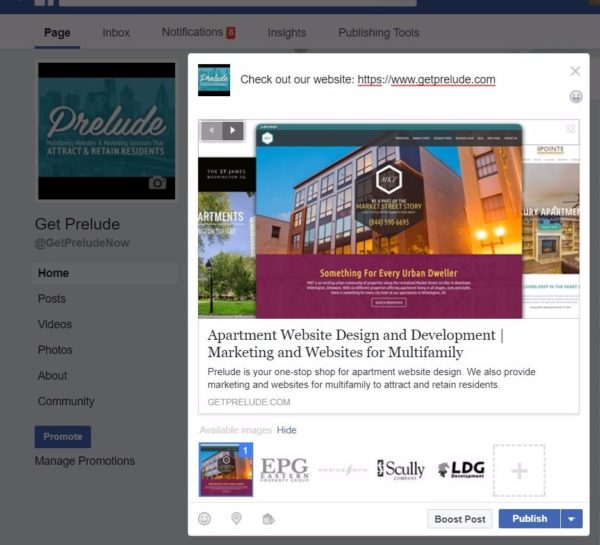Recently, Facebook rolled out a new change to specific posting capabilities in an effort to reduce viral fake news. Until recently, users who were posting a link to a Facebook page could change the headline, body text, and image of the preview that pops up in the newsfeed. As a result, companies or organizations have been able to pull a bait-and-switch on users by changing the preview of the post to something that doesn’t entirely reflect the content of the actual URL. This information will now be pulled directly into the post from the URL that you’re sharing.
The headline of the post is the bold top text that you see in your post – this will now be pulled from the title tag on the webpage that you’re sharing. The body text is the lighter, longer text underneath the headline and this will now be pulled from the meta description of the webpage you’re sharing. The image associated with your post will be pulled from whatever images are on the webpage you’re sharing – which could be several or none.

Of course, not everyone posting links on their Facebook pages opted to change titles, body text, or photos on previews, though some that do rely on this ability to provide the best content to their followers. Media outlets, sports, and entertainment pages currently have the ability to claim Link Ownership through Facebook to retain the ability to make changes to post previews. It’s unclear if Facebook will roll out this capability to other businesses, but it did note that anyone wishing to have link ownership approved must do so by September 12, 2017.
Facebook notes on their Link Preview Editing page, “We’re first rolling this [Link Ownership] feature out to media publishers, including news, sports and entertainment Pages, because we’ve found that many of these Page types modify links to their own articles at scale.”
To work around this, Facebook allows you to add Open Graph meta tags to your pages. These meta tags allow you to tell Facebook what information should appear when the link is shared. The meta tags override the title tags and meta descriptions you have worked hard on for ranking factors and tells Facebook what specifically about the page should be shared. Once you add the Open Graph meta tags, you can test how your link will appear using their debugger tool.
As always, if you have any questions or need help, we’re here.




